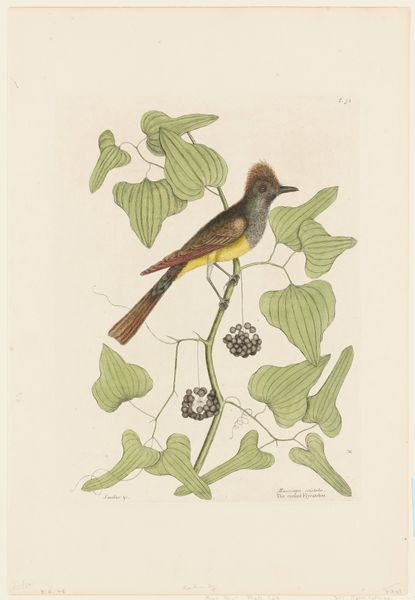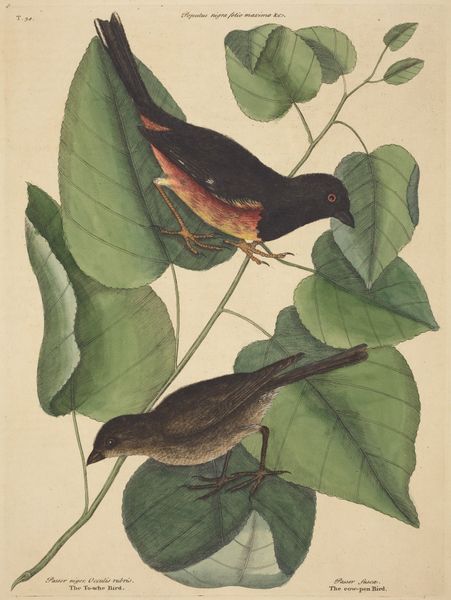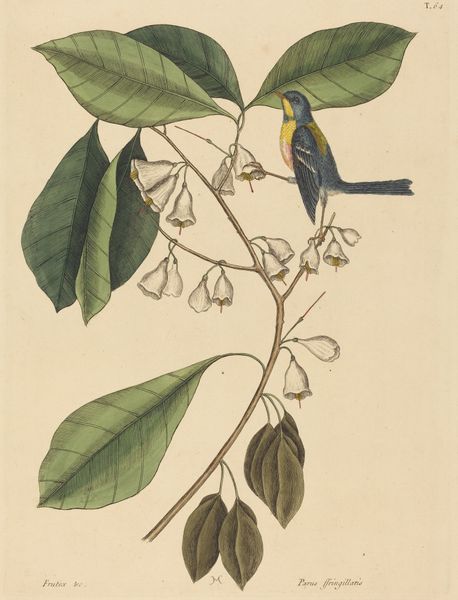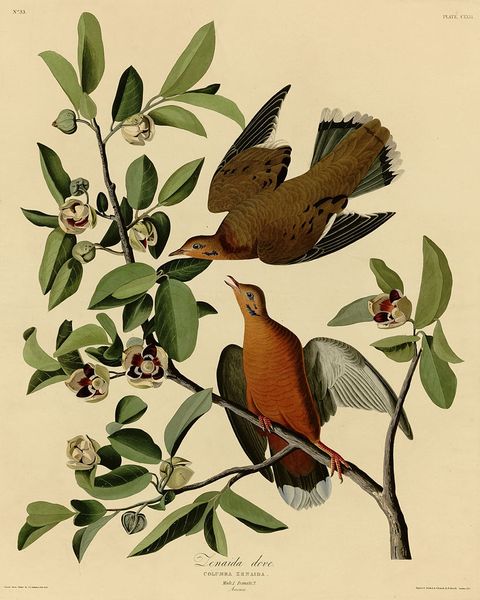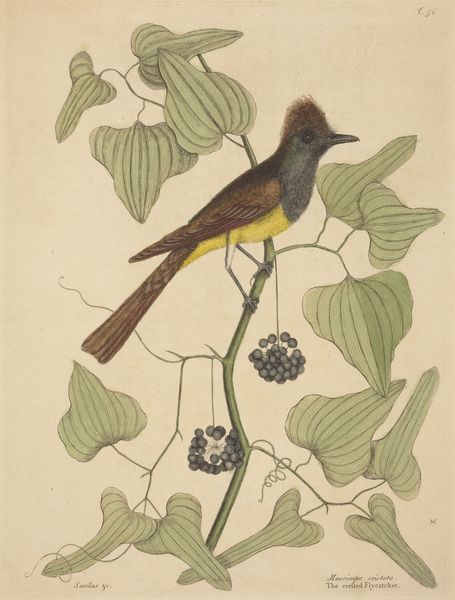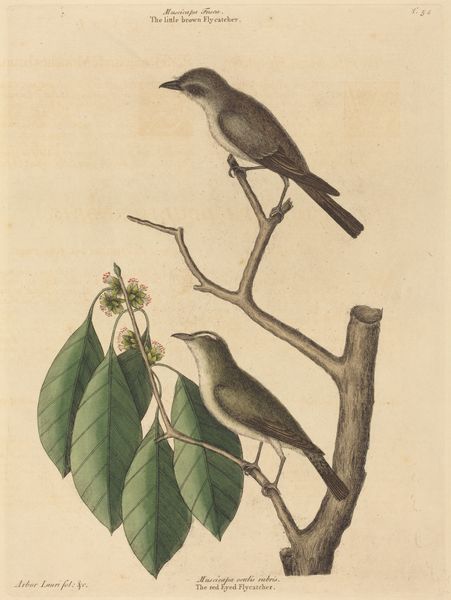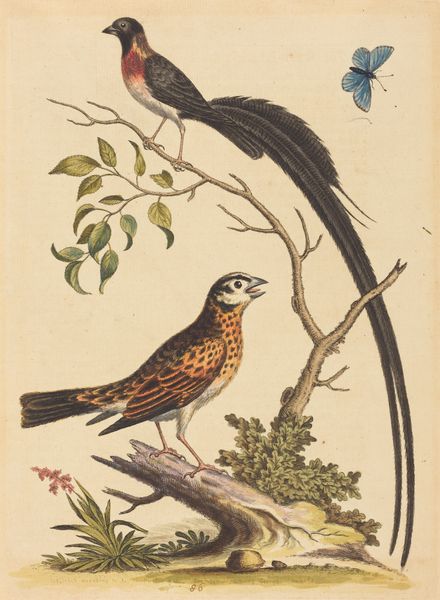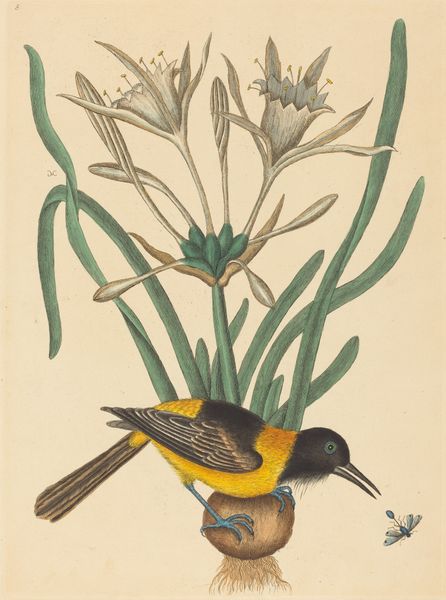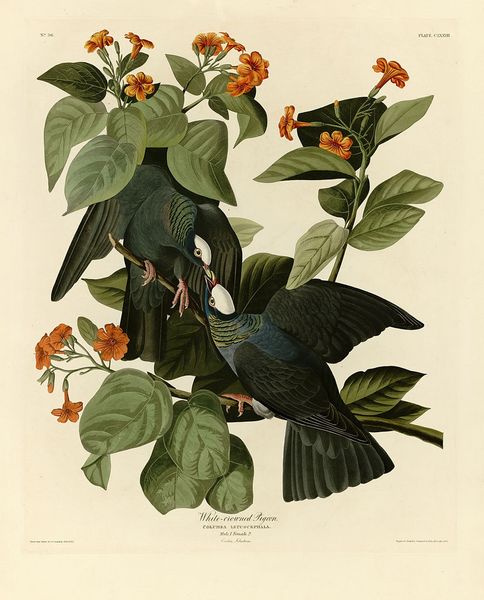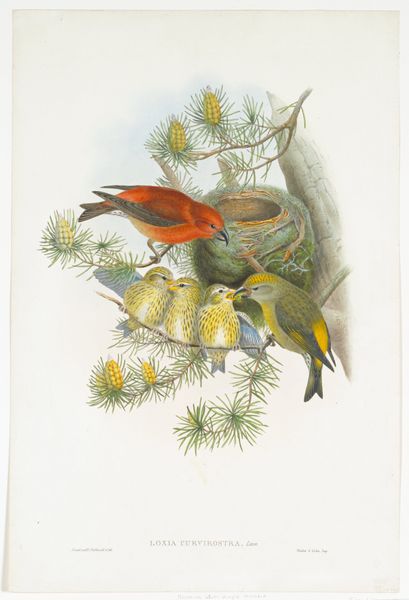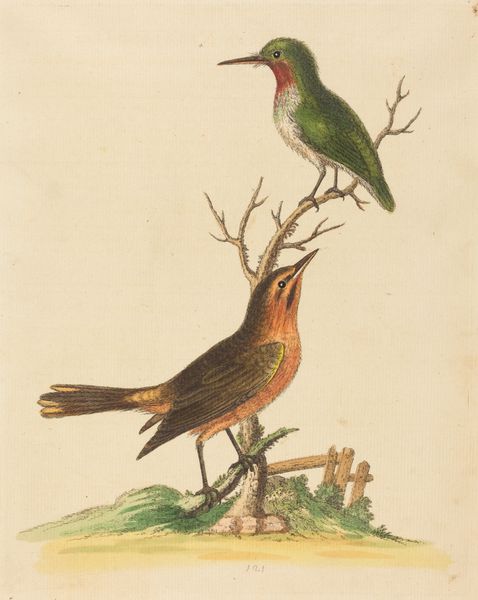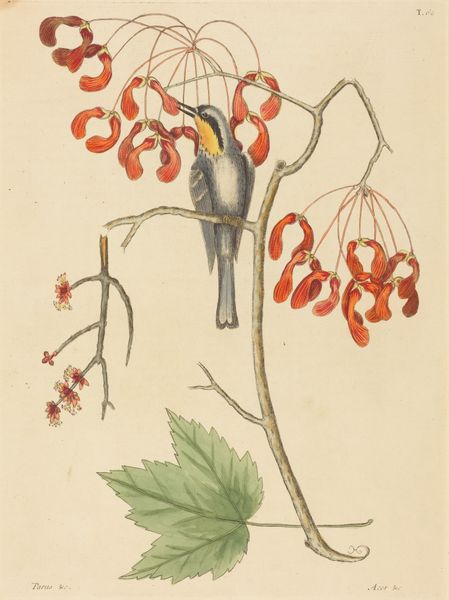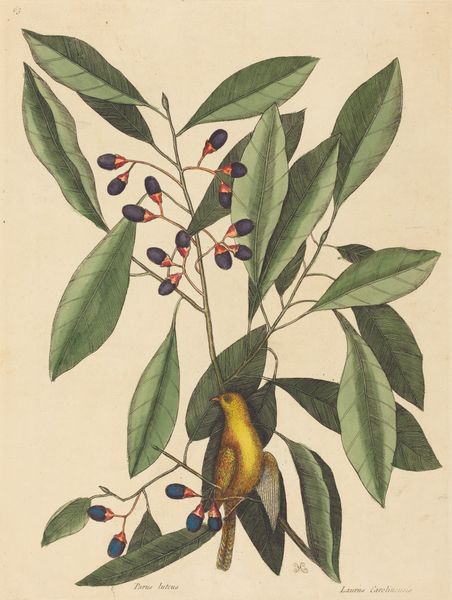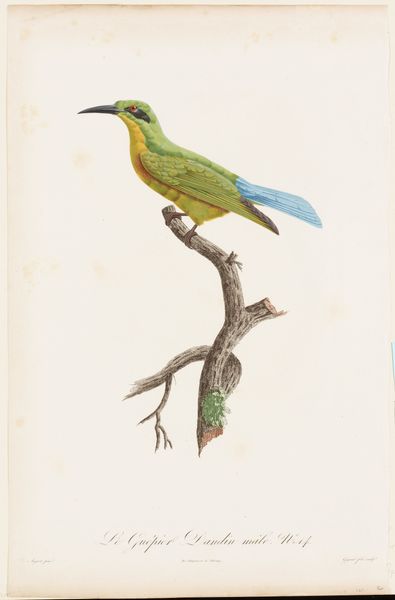
drawing, hand-colored-etching, print, etching
#
drawing
#
hand-colored-etching
# print
#
etching
#
landscape
Dimensions: 14 x 10 1/4 in. (35.56 x 26.04 cm) (sheet)
Copyright: Public Domain
Editor: So, this is Mark Catesby’s hand-colored etching called "The Baltimore Bird," dating from around 1731 to 1743. It’s lovely, the colors are so delicate. How do you interpret this work, looking at it now? Curator: It strikes me as more than just a simple illustration. It’s a visual encoding of colonial encounters, isn’t it? The Baltimore Oriole itself becomes a symbol. Editor: How so? Curator: Consider the colors – black and orange. These were the heraldic colors of the Calverts, the Lords Baltimore, who founded the Maryland colony. Doesn't it suggest a visual branding, where nature itself seems to endorse colonial power? Editor: That’s a powerful idea. The bird representing a family… Curator: It speaks to the way colonists sought to imprint their identity upon the landscape. Look, too, at how meticulously the tulip tree and its flower are rendered alongside the bird and nest. It’s an attempt to document, classify, possess. What do you think the nest symbolises? Editor: Home, perhaps? Establishment? The future? Curator: Indeed! The nest signals a desire not just to observe, but to settle and perpetuate. It’s not just a bird; it’s a statement of belonging, coded in natural forms. This imagery shaped European perception of the 'New World'. Editor: Fascinating! I never thought of natural history illustration having such layers of meaning. It makes you consider the legacy behind even the simplest scientific document. Curator: Exactly. Images hold so much cultural memory, consciously and unconsciously, once you begin to look beyond the surface.
Comments
No comments
Be the first to comment and join the conversation on the ultimate creative platform.
